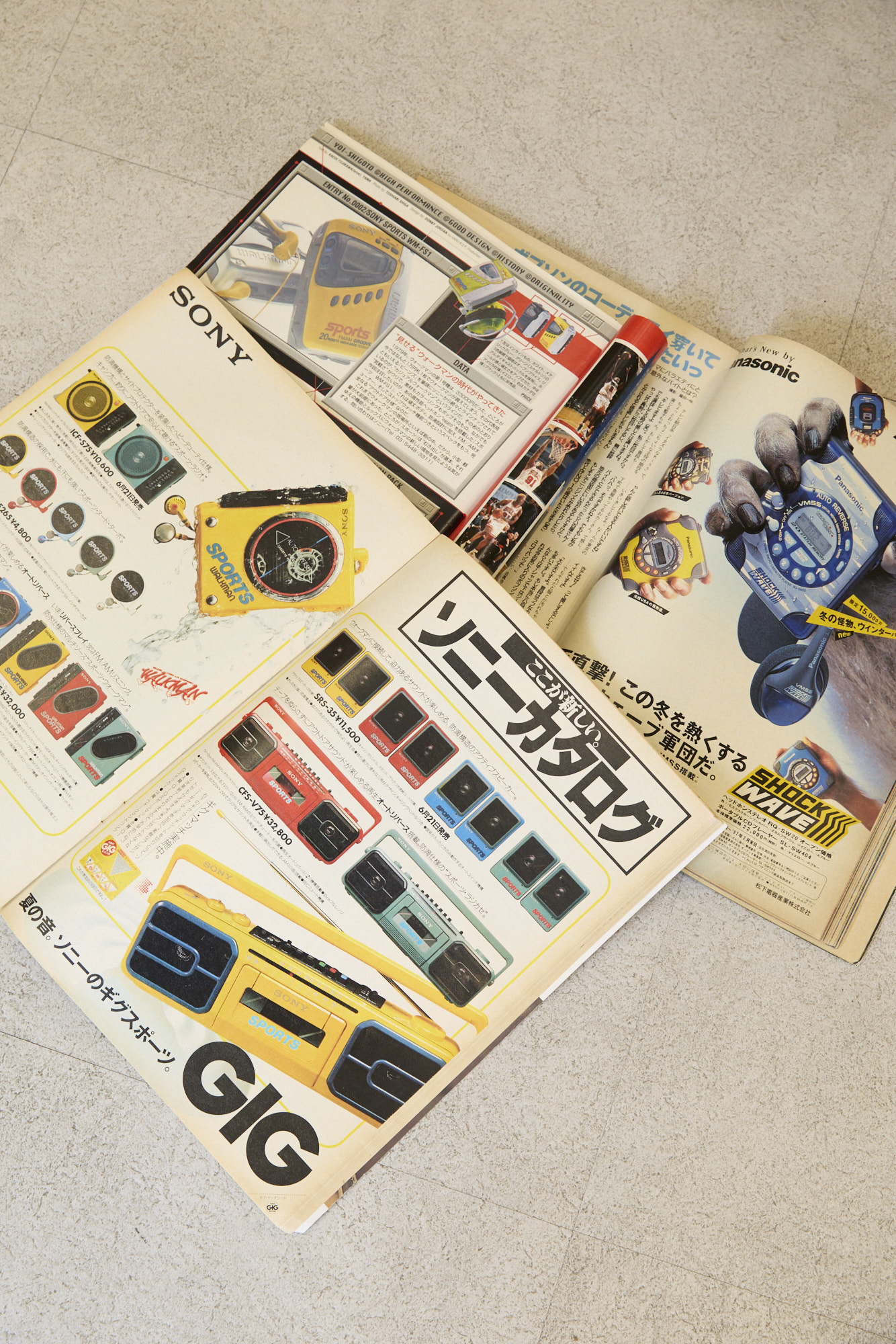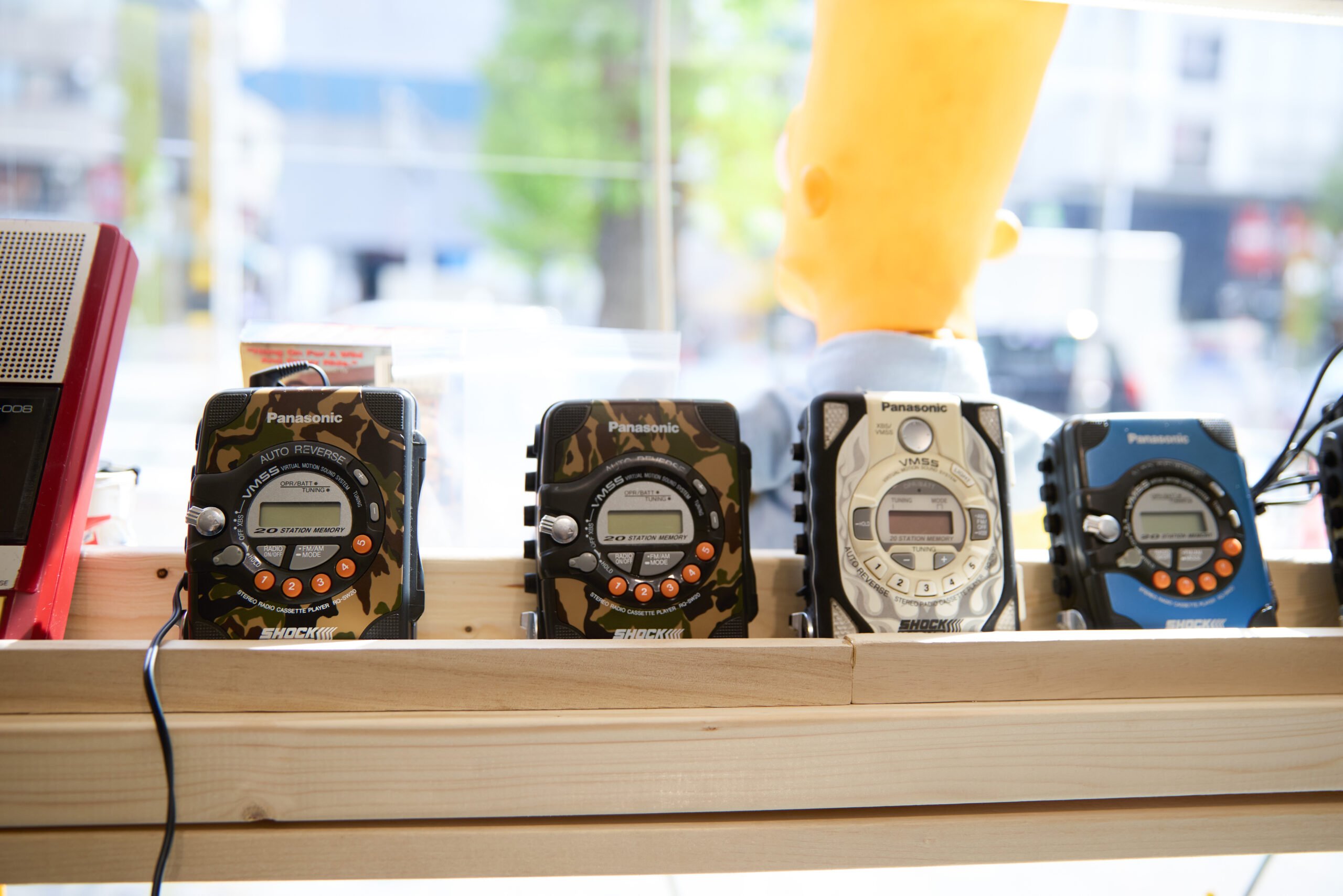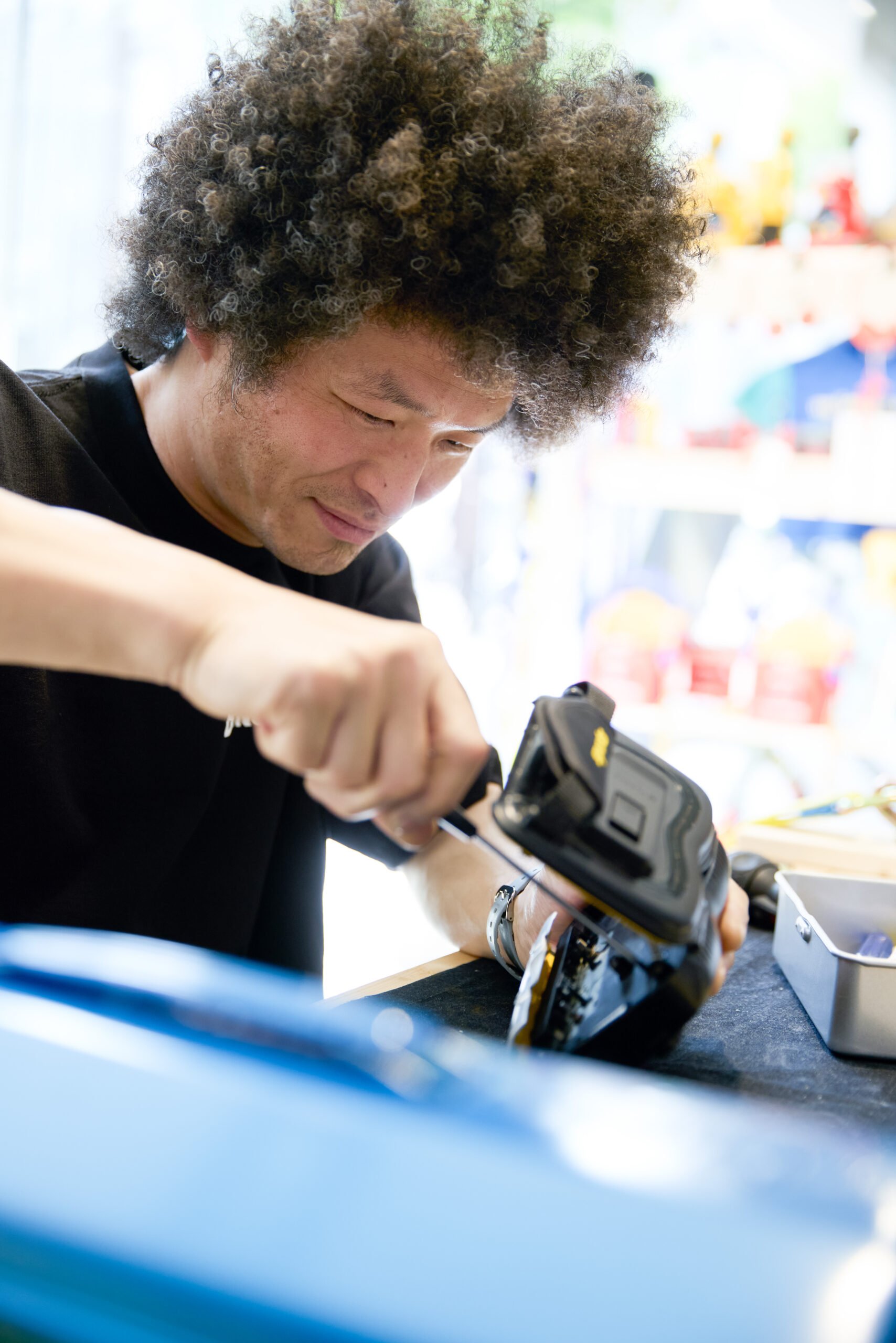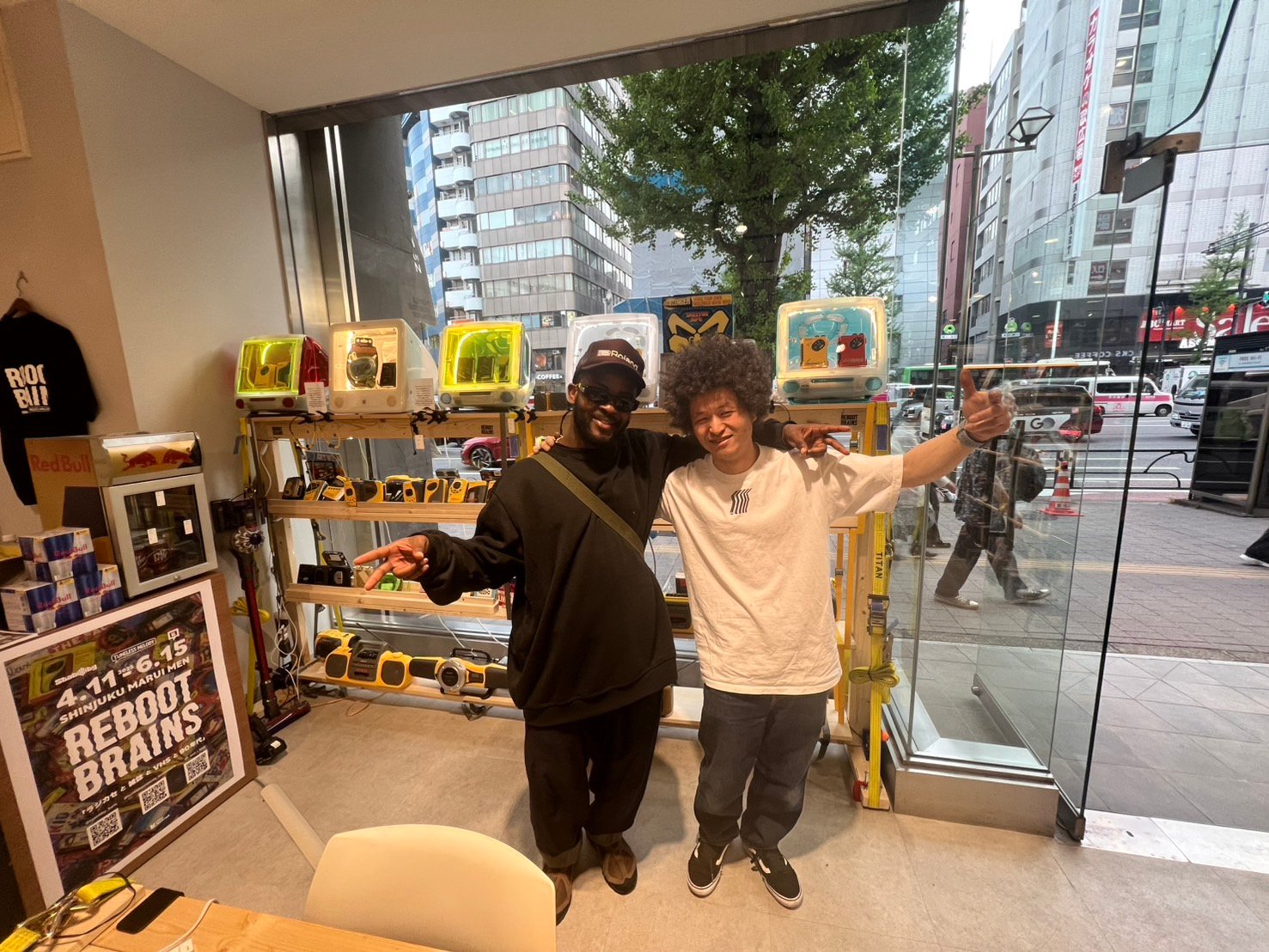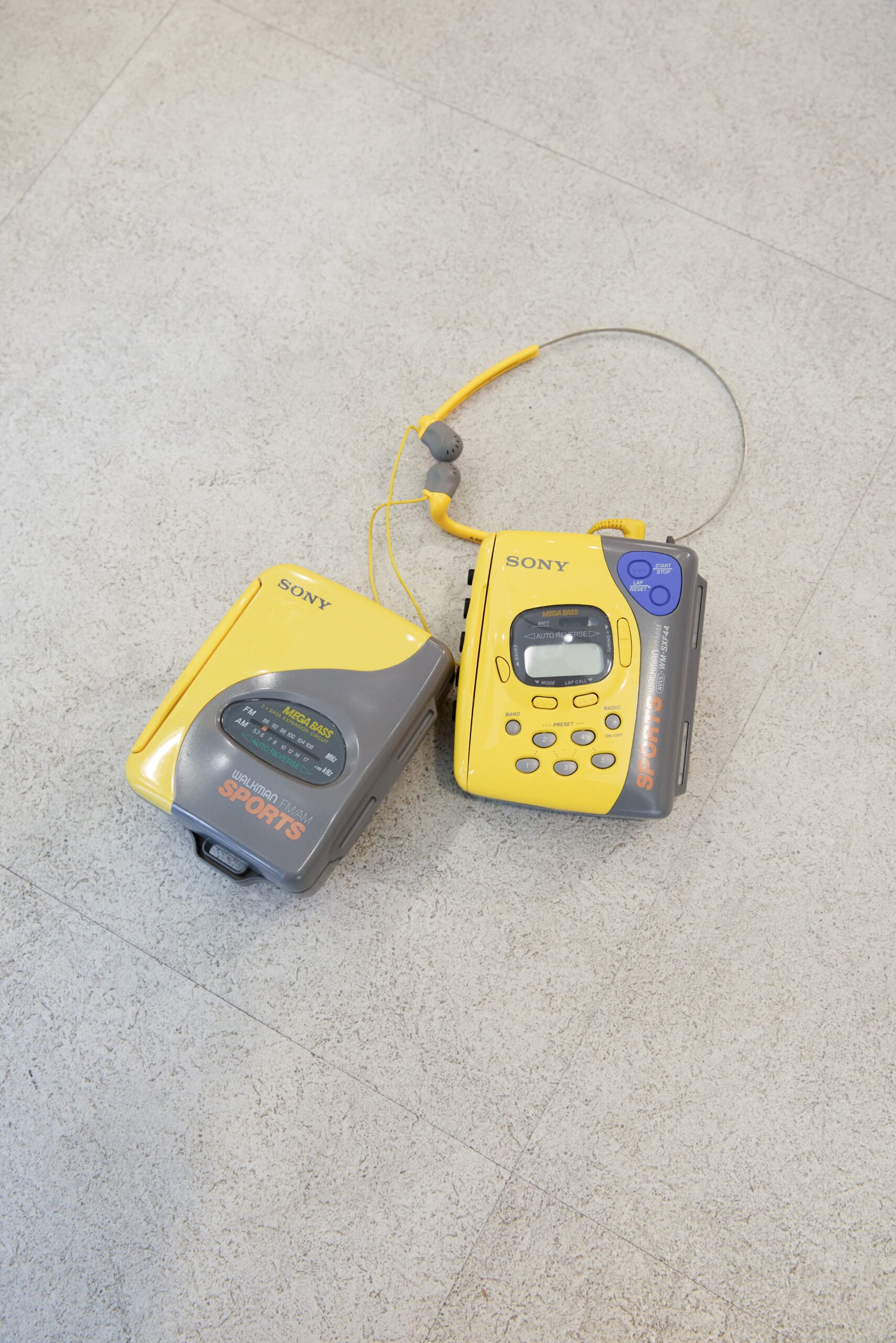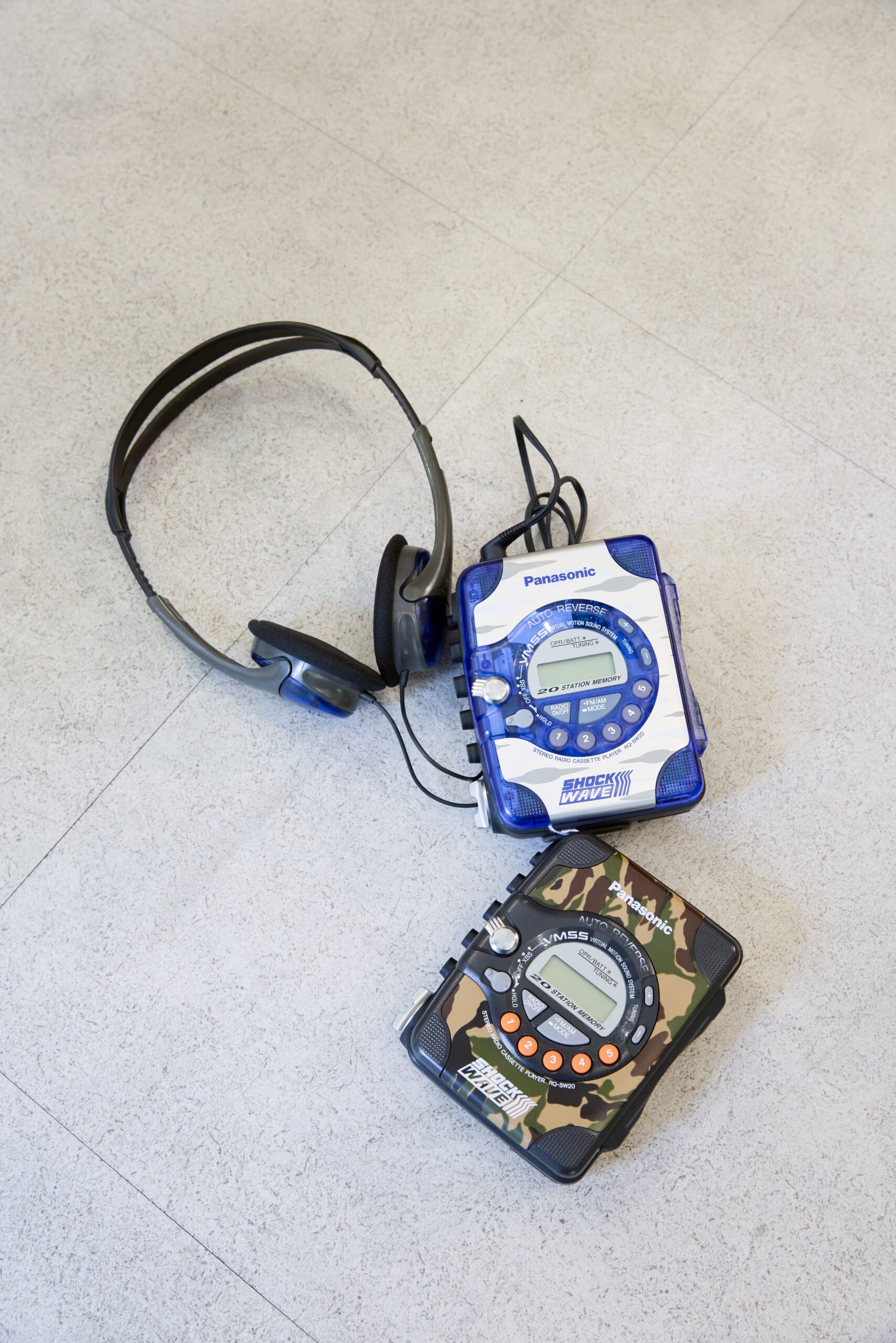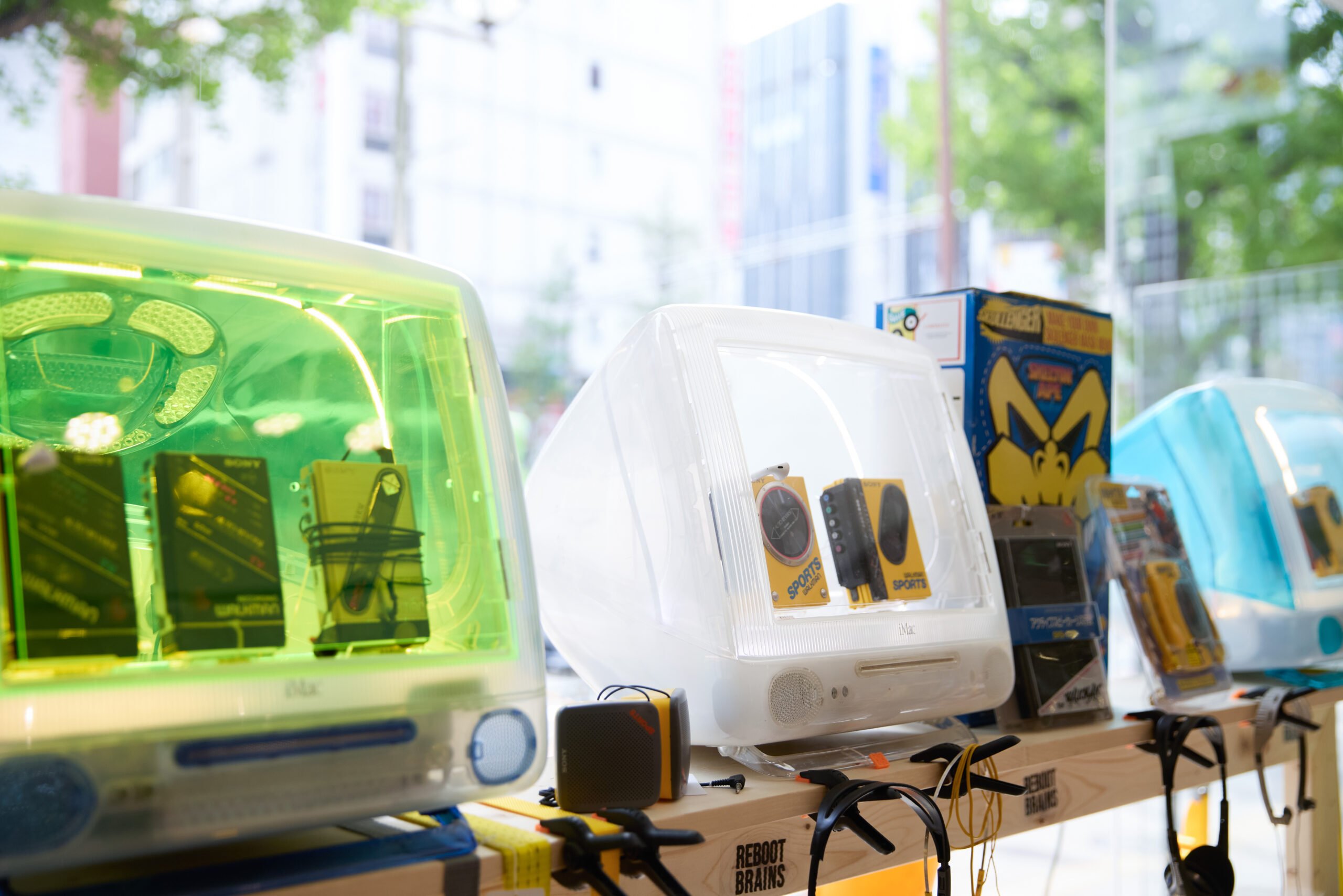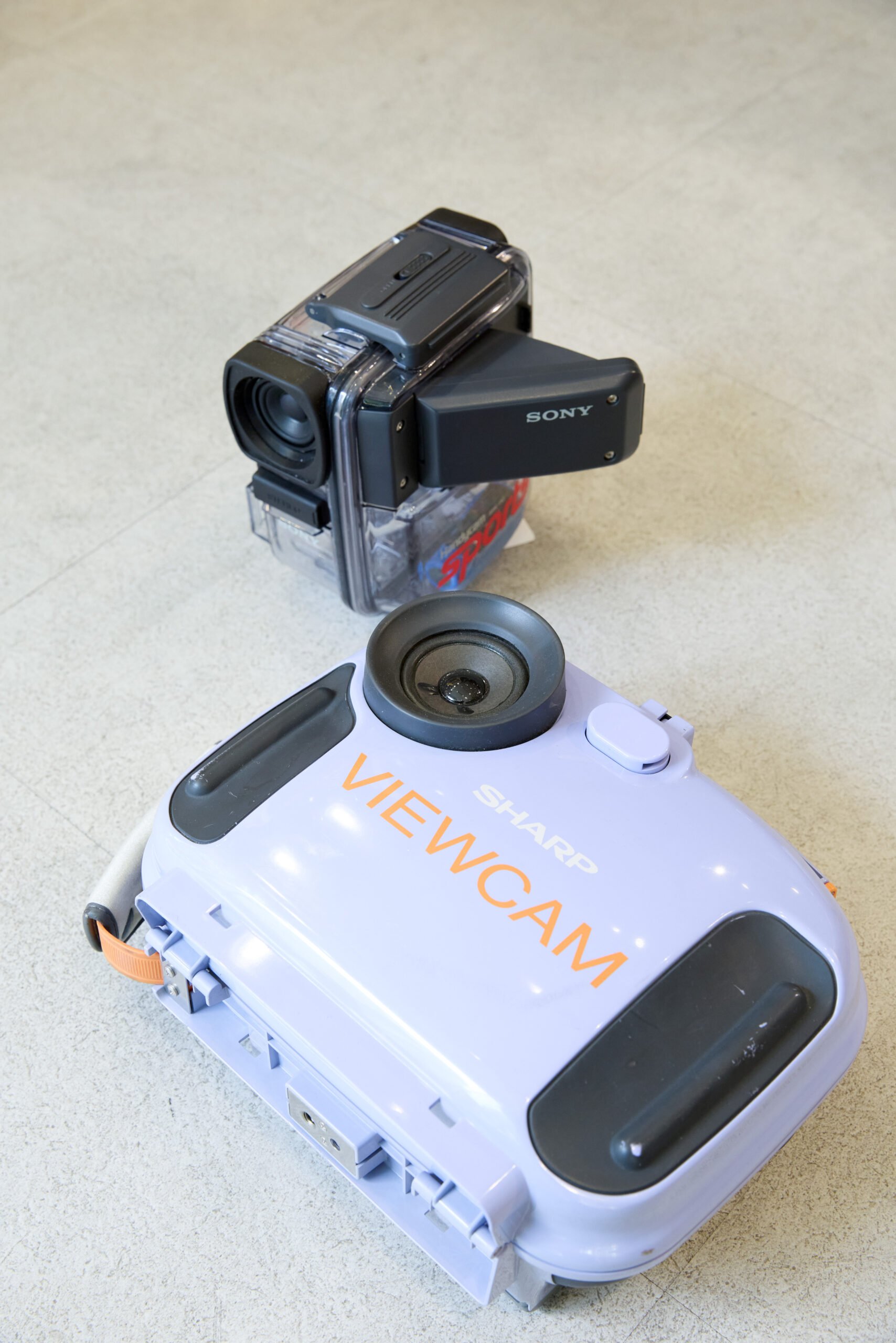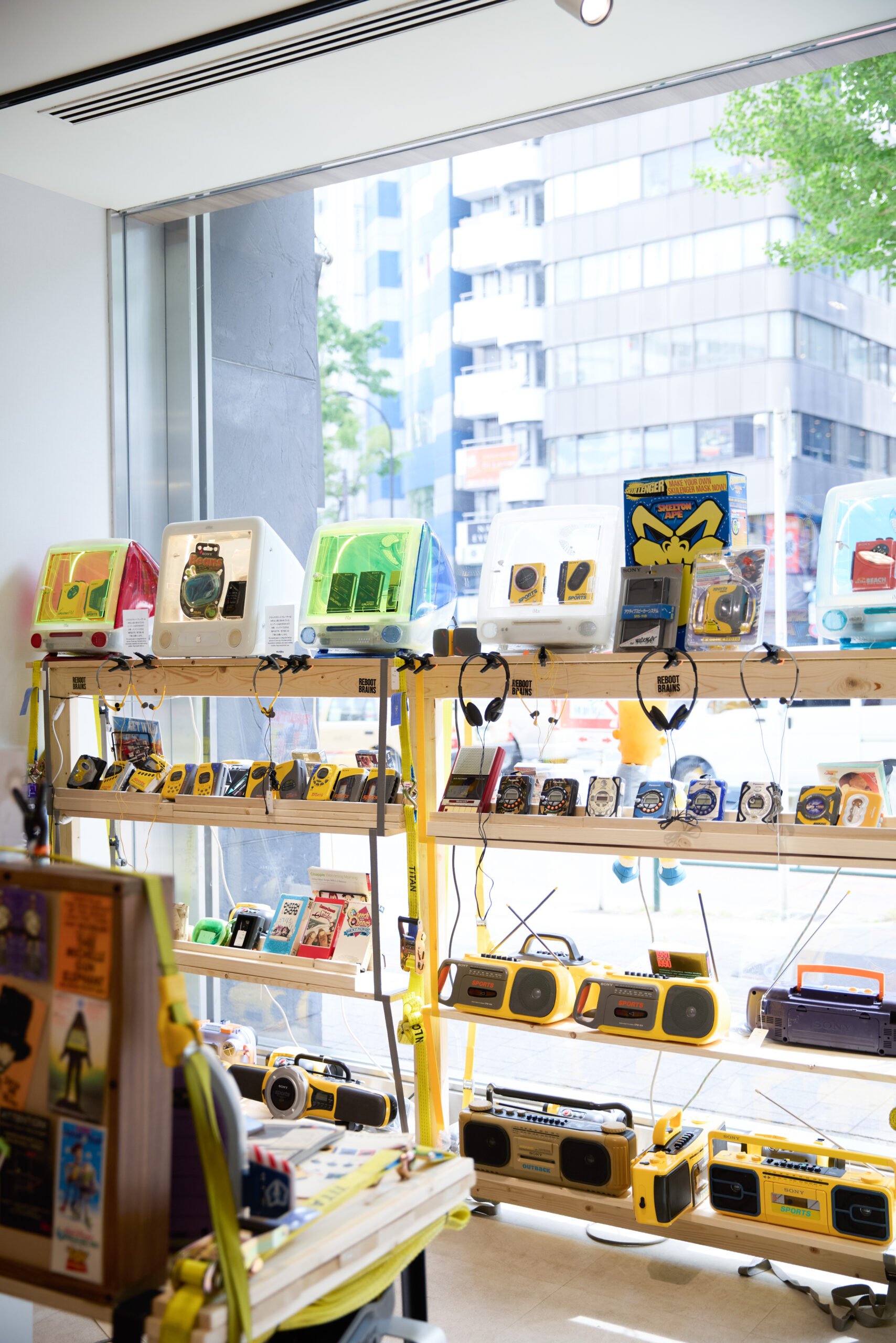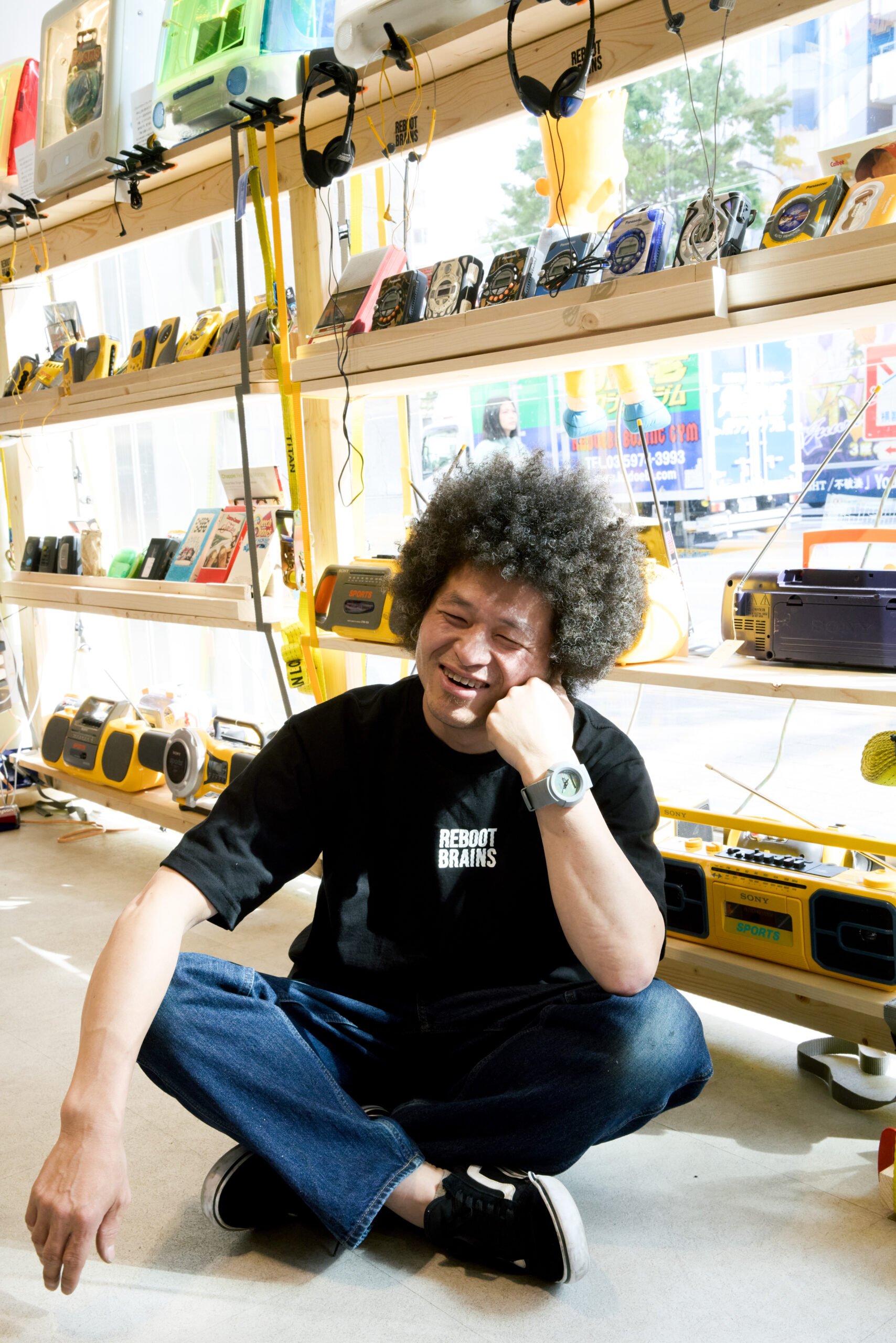CATEGORY
AREA

Cassette players, once a staple gadget among Japanese youth from the 1980s to the early 2000s, are enjoying a renaissance. The now-rare practice of listening to music on cassettes, combined with their toy-like appearance and vibrant colors, has attracted fresh attention as a new cultural movement dubbed "Comical Devices." We explore the frontlines of this trend.
In the pre-smartphone era of the 1980s to early 2000s, portable devices like cassette, CD, and MD players were the only way to listen to music on the go. Major electronics manufacturers, including Sony, Panasonic, and Kenwood, released portable devices prominently featured in the era's fashion magazines.
Articles and advertisements featuring cassette players in 1990s fashion magazines.
"Among fashion-conscious youth, Sony's 'Sony Sports' and Panasonic's 'Shockwave' were particularly popular. With their colorful designs and unique, pop-cool aesthetics, they became fashion accessories for street-styled youth," explains Kazuhiro Shimojima, born in the 1980s and now running "Stability," a brand that revives vintage portable devices as cultural artifacts.
"Back then, music was completely intertwined with youth fashion and lifestyle. Hip-hop listeners dressed in B-boy style, punk fans wore rider jackets—your musical taste defined your sense of style. In that era, magazines were the only source of cutting-edge information, and what appeared in magazines was everything."
"Stability" collects forgotten gadgets from around the world, repairs and customizes them, and sells them with added value. "I often listened to music on cassette tapes when I was young. Feeling nostalgic, I wondered if they were still available, but found they were all broken. I figured if humans made them, humans could fix them, so I tried repairing one by trial and error. Surprisingly, I fixed it easily," laughs Shimojima. "That was the beginning of 'Stability. Later, I felt that just repairing and selling wasn't distinctive enough, so I started customizing them to create something new."
Mr. Shimojima repairing a broken Sony Sports cassette player.
Even Knxwledge, a Los Angeles-based producer and beatmaker affiliated with Stones Throw Records, purchases these vintage devices for beat-making, a testament to the trusted repair techniques.
The lineup is colorful, pop, and eye-catching. "I grew up influenced by hip-hop culture. So I named these gadgets 'Comical Devices'—items that evoke hip-hop culture while being 'more than toys, though less than professional audio players.' The gadgets from that era embody the designers' vision and individuality, with their passion manifested in the product design. Rather than focusing on marketability, they embraced a 'let's just do it!' spirit of challenge. That's what makes them fascinating—designs you simply don't see in today's world."
As Mr.Shimojima suggests, these designs that defy modern rationality are gaining popularity among overseas customers and younger generations.
Sony's "Sony Sports" cassette players were released for outdoor and sports use, affectionately nicknamed "SoniSpo" for short. The classic yellow and gray color scheme was standard, and cassette decks were also released in this line. (Left) 19,000,ye (Right) 32,000yen
Panasonic's "Shockwave" series released in the late 1990s. With tough designs and camouflage patterns that set them apart from other manufacturers, they were hugely popular among younger generations at the time. (Top) 29,000yen, (Bottom) 16,000yen
"Besides the design and passion, I love the mechanical switches. When you press a cassette player's switch with a satisfying click, the internal mechanism starts moving, and you hear the sound—it engages all five senses. You can't experience that sensation listening to music on a smartphone. These cassette players are simple to construct, so repairs aren't too difficult. In contrast, CD and MD players have complex designs with many consumable parts, making repairs challenging. Plus, new cassette releases are now available worldwide, similar to vinyl records, which is why I continue what I do in Stability."
Beyond just repairing vintage portable devices, Shimojima draws on the sampling mindset of hip-hop culture to offer them as objects with new value. This includes customized original goods based on vintage devices.
"The first-generation iMac that debuted in the late 1990s and caused a sensation—it's not practical as a computer anymore, but the design still looks cool even today. So I thought, why not make it usable as interior decor? So I customized it into a display. I've also transformed Sony Sports underwater cameras into speakers."
Video camera waterproof cases, initially released for underwater filming, customized with built-in speakers. Remarkably, sound emerges from the lens area. With Bluetooth functionality, they're both convenient and stylish. (Top) 29,000yen, (Bottom) 42,000yen
"This idea of converting input devices into output devices seems fresh to overseas customers and young people who don't remember the era. They find it fascinating. Interestingly, reactions from people abroad vary by country—Americans consider whether it's necessary or unnecessary for them, while French people, who value preserving old items, react more like Japanese customers. Asian customers tend to be collectors."
By repurposing these devices through customization, "Comical Devices" are finding new relevance. This connection between past and present suggests potential for broader cultural impact.
Comical devices" are not only supported by those who knew them back then, but are also accepted by new generations and people overseas, and are growing as a culture. In order to spread "Comical Device" as a culture, Shimojima has been holding pop-ups all over Japan, and in 2024, he held more than 40 pop-ups! Currently, a pop-up event titled "REBOOT BRAINS" is being held at Shinjuku Marui Men's Building. At the venue, not only comical devices, but also Japanese magazines from the 1980s to 2000s and VHS of foreign movies are displayed and sold. Mr. Shimojima says he was fascinated by magazines and movies in the same generation as him.Lipit Ishtar."and Kazuya Tanaka oftuneless melodyThe project is being handled by three people, including Hayato Hotta of
"Stability" displays many vintage portable cassette players and customized gadgets.
"1990s Japanese culture was completely different for me compared to today. Categories were fewer but more substantial. Now, information overload has led to excessive fragmentation. I can't say which era is better, but I hope that sharing the culture that influenced me can help others or bring them happiness," says Shimojima. When asked about future plans, he responds:
"My activities are deeply rooted in street culture. After experiencing various pop-up events in 2024, I want to express my worldview more fully. For example, I'm considering turning an entire vehicle into a mobile shop, like a food truck. Eventually, I'd like to expand beyond Japan to overseas markets." He hopes to introduce "Comical Devices" internationally.
Japanese culture from the 1990s continues to influence and shine across time and borders. Why not experience the potential of these gadgets, which are finding new life as communication tools, for yourself?
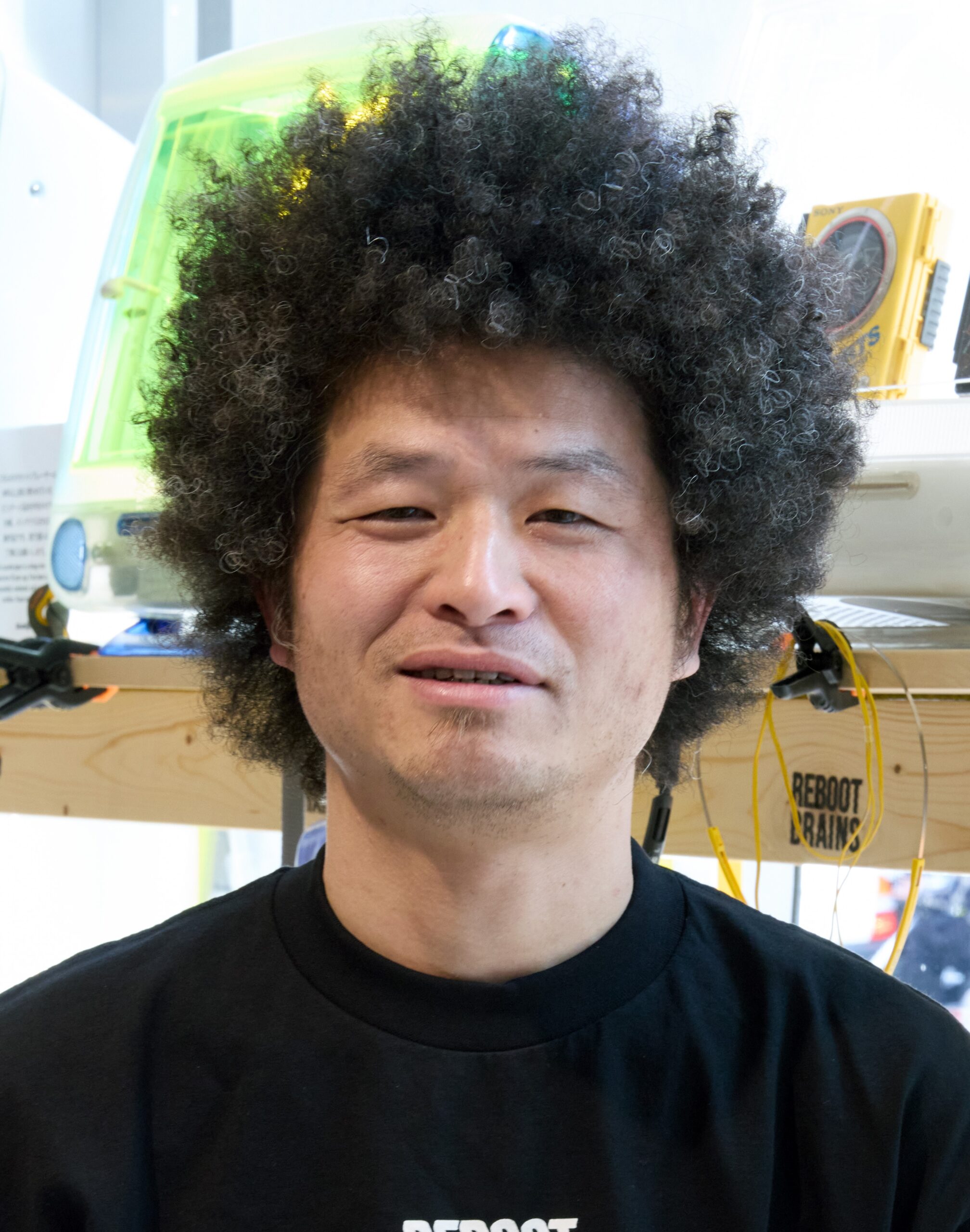
Born in 1981 in Fukui Prefecture. After working for a popular outdoor brand, he became independent. In 2022, he launched "Stability" and has been actively promoting the unique genre of "Comical Devices."
Instagram:stability_turn
